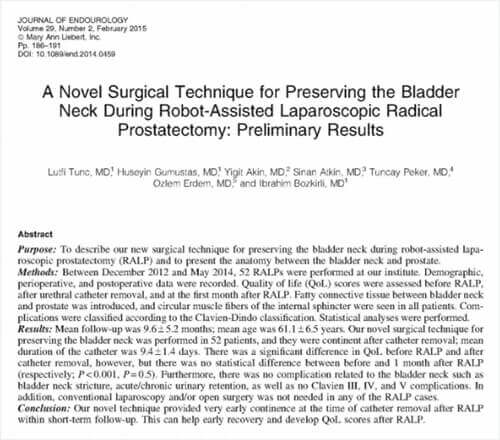It does not matter which technique is preferred during robotic radical prostatectomy surgery. Some technical points have a great importance in perioperative and postoperative periods concerning the possible side effects.

Those important technical points are similar in each surgical technique: Preserving nerves is important in terms of sexual function, preserving sphincters is important with regard to continence mechanism, and not leaving a residual cancer tissue behind matters. With the advanced imaging system and thin arms, high movement capacity and anti-vibration working principle, high success rates concerning the important points of the operation are ensured during robotic radical prostatectomy.
In meta-analyses with large series, the results showed that preserving the bladder neck and ensuring a sufficient urethral length would minimize incontinence. http://www.europeanurology.com/article/S0302-2838(16)30666-2/pdf. But the technique has not been demonstrated yet.
Later on, it was Prof. Tunc who first described this technique. The technique describes the avascular fatty tissue area around the bladder neck and prostate border to give a chance to reach the correct anatomy during the dissection of prostate. This resulted in the preservation of the bladder neck and minimized incontinence risks and negative surgical margins. https://www.liebertpub.com/doi/abs/10.1089/end.2014.0459 .
In the literature with this technique ‘The Bladder Neck Preserving Technique’ less amount of bleeding and high amounts of continence rates were shown.